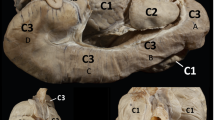Abstract
MY fellow-workers on wool in the northern hemisphere will soon be welcoming a crop of lambs. I should like to tell them of the usefulness of the simple device of light covers. Covers for older sheep have already proved most valuable in work on the chemistry of yolk by my colleague, Mr. W. G. Sutton. The covers provided for my lambs protect the tips of the long fibres, which otherwise have largely become broken at the age of four or five months. For the classification of fibre types, it is necessary that the tips should remain intact. The covers also retain the loose birthcoat kemp. The kemps so far mainly studied are coarsely medullated fibres that complete their growth in a few weeks and are soon shed. The coarser of these can be recognised at birth as destined to fall out, but fibres having the structural features of the finer kemps may persist, being thinner and less medullated below the point at which a shed fibre completes its growth. The most satisfactory way to ascertain which fibres are shed is to hold them in the fleece by a cover. By sampling at suitable times, it is then possible to compare the numbers and types of shed kemp with the numbers and types of fibres which there is reason to regard as succeeding them in the same follicles.
Similar content being viewed by others
Author information
Authors and Affiliations
Rights and permissions
About this article
Cite this article
DRY, F. The Use of Covers on Lambs in Biological Work on Wool. Nature 127, 482–483 (1931). https://doi.org/10.1038/127482c0
Issue Date:
DOI: https://doi.org/10.1038/127482c0
- Springer Nature Limited





